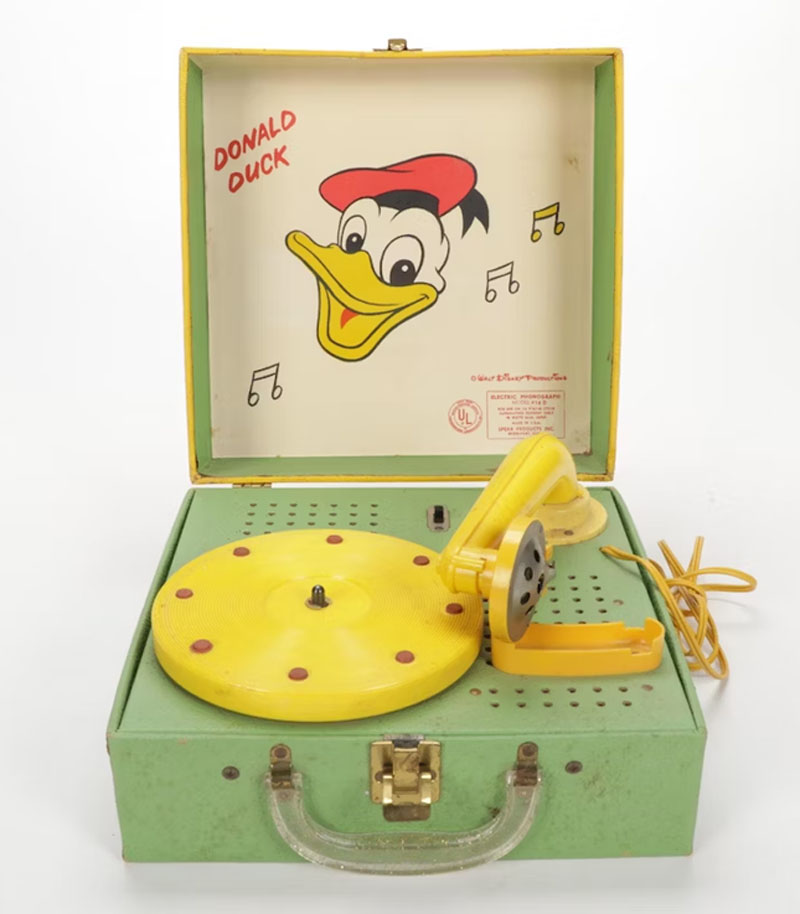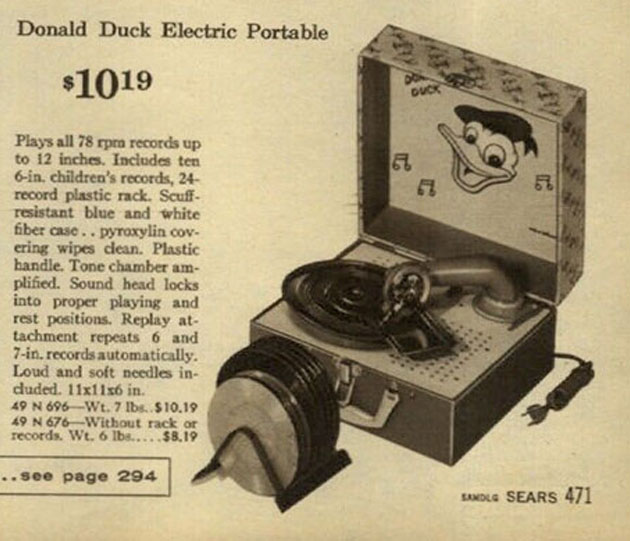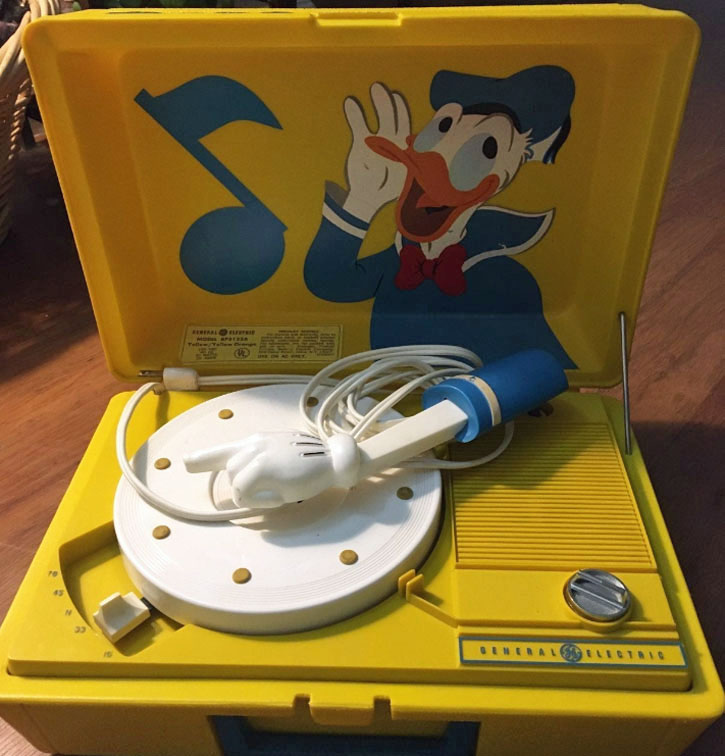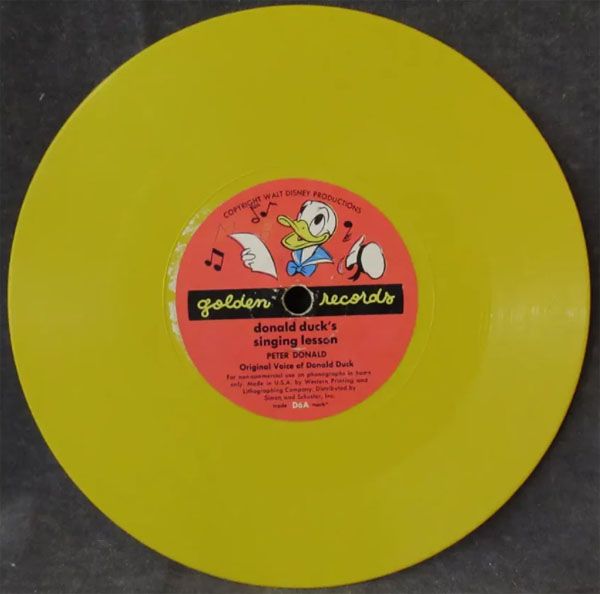On June 21, 1961 the
short film Donald and the Wheel (starring Donald Duck)
was released to theaters. The Gramophone is used to help explain
the importance of the wheel's invention.
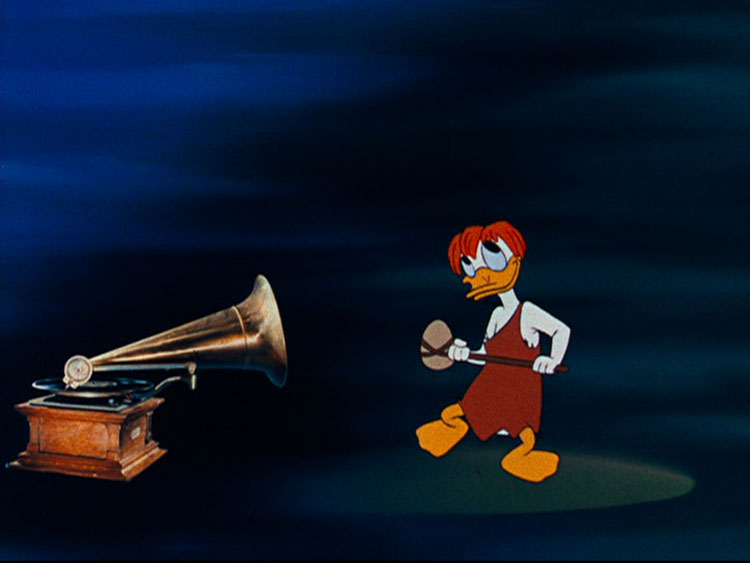
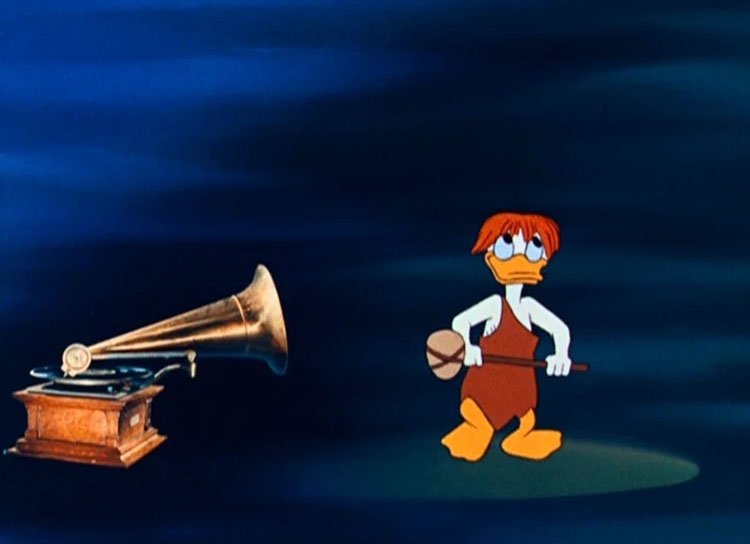

Caveman Donald
dances to the music from the gramophone and jukebox, a more “practical”
example of the use of wheels - Courtesy
of DisneyDetail
blog and Walt Disney Productions
The DisneyDetail
blog summarizes this film and the gramophone and jukebox
segment as follows:
This educational short
begins with two “spirits of progress” watching a piece of wood rolling
around like a wheel. Junior, the younger of the spirits, asks his
dad why he’s so impressed with the wheel. His father claims it to
be the greatest invention of all time, to which Junior scoffs. When
his father challenges him to name something better than the wheel,
Junior accepts the challenge, but every invention he names is only
possible thanks to the wheel. The father takes his son back in history
to meet the inventor of the wheel.
Back in the caveman
age, we see a prehistoric Donald Duck, who, after a run-in with
a tiger, is inspired to create the wheel. The spirits try to explain
to Donald what a wheel is used for, but Donald seems to not be able
to understand. Donald finally asks them who they are, and they explain
to him that they are the “spirits of progress,” there to help him
with his great invention. The first example they give him is attaching
two wheels to his sled, making it easier for him to cart around.
The song at that point
goes through the evolution of the wheel, with Donald also donning
the attire of each time period being sung about. Steam is soon added
to the idea of the wheel, with trains and automobiles lauded in
song, and Donald involved in comic situations with each passing
period. Finally, after a massive pile-up on the highway, Donald
angrily declares he’d rather walk.
They go back to Donald’s
time, trying to take another approach with how important the wheel
is. When they try to explain that the world is round, Donald insists
that the world is flat. Junior takes over this time, trying to explain
the rotation of the Earth, the moon, and all the planets in the
solar system. The demonstration continues with gears to show how
wheels keep things working. For a more “practical” example, they
begin with a music box, moving to the gramophone, then the jukebox,
which features Donald dancing with a live-action dancer.
The spirits, however,
push a little too hard with how important the wheel will be, showing
wheels in everything he will use in his day. When they claim that
he’s about to create a great invention, Donald tells them “Oh, no!
I’m not going to be responsible for that!” The spirits are consoled
with the fact that although Donald didn’t invent the wheel, someone
eventually did.
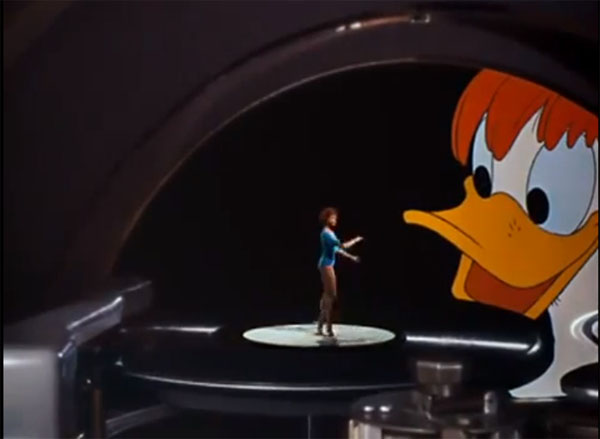
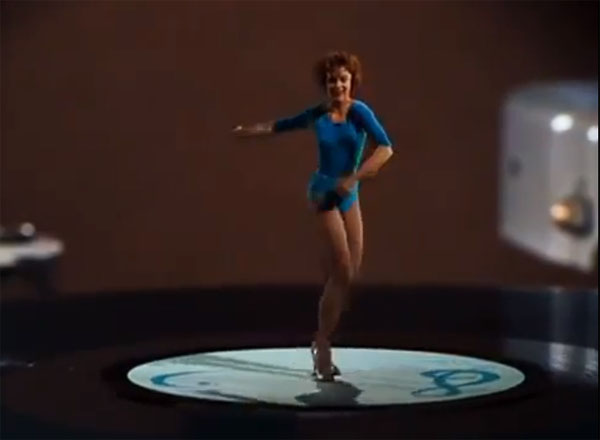

Caveman Donald is
also shown interacting with live figures – a throw back to "The
Three Caballeros" as he goes ga-ga for a miniature live action
ballerina. - Text and screenshot of ballerina dancing on an
LP courtesy of CartoonResearch.com
